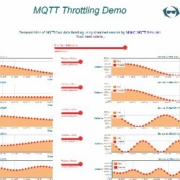Modern businesses are highly consumer-driven. Delivering value to our customers should, therefore, be our first priority. Making the tasks of our customers more convenient and efficient should be our primary goal. To do that, we need ways to figure out “what” exactly makes our customers more efficient and brings them convenience in their tasks.
This requires a lot of trial and error. This requires us to build and experiment with systems and features to see if these capabilities actually bring significant value to our customers. This is the primary motivation that drives enterprise architecture to be much more disaggregated and composeable. Heard about “Microservices” anyone?










